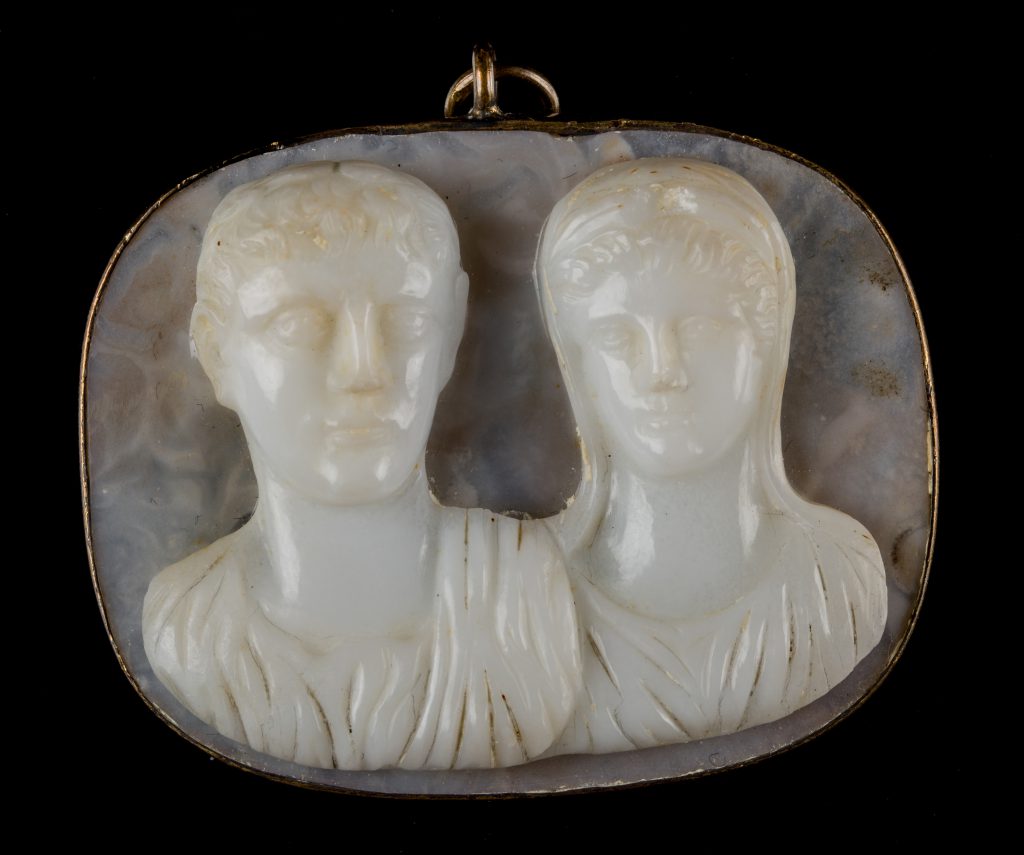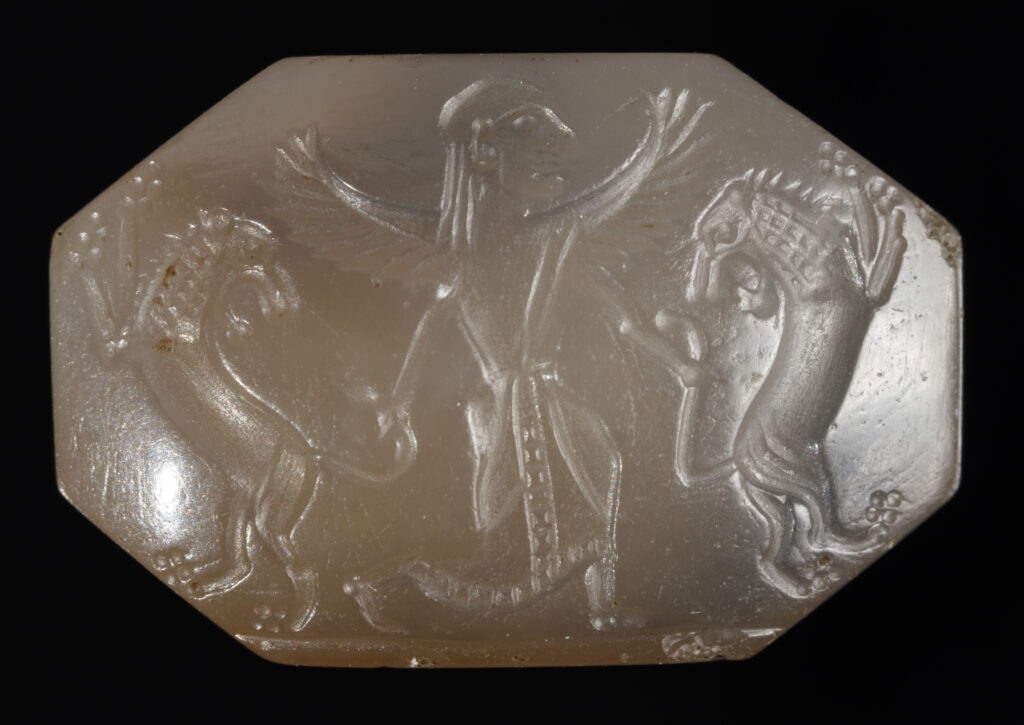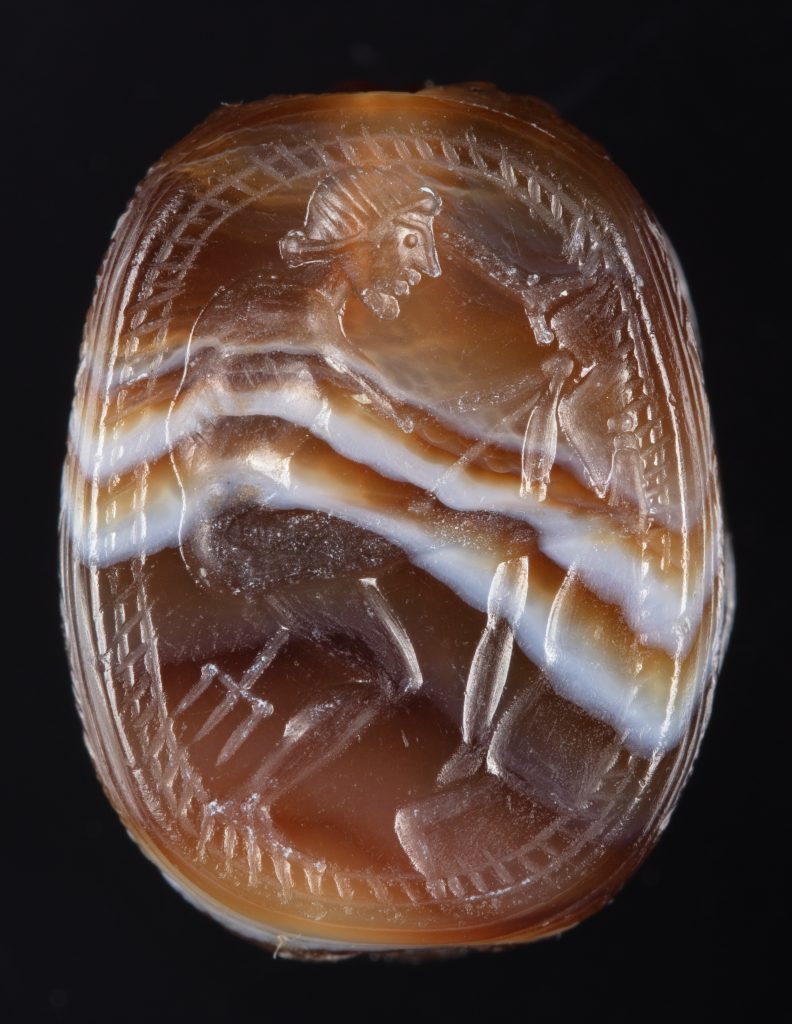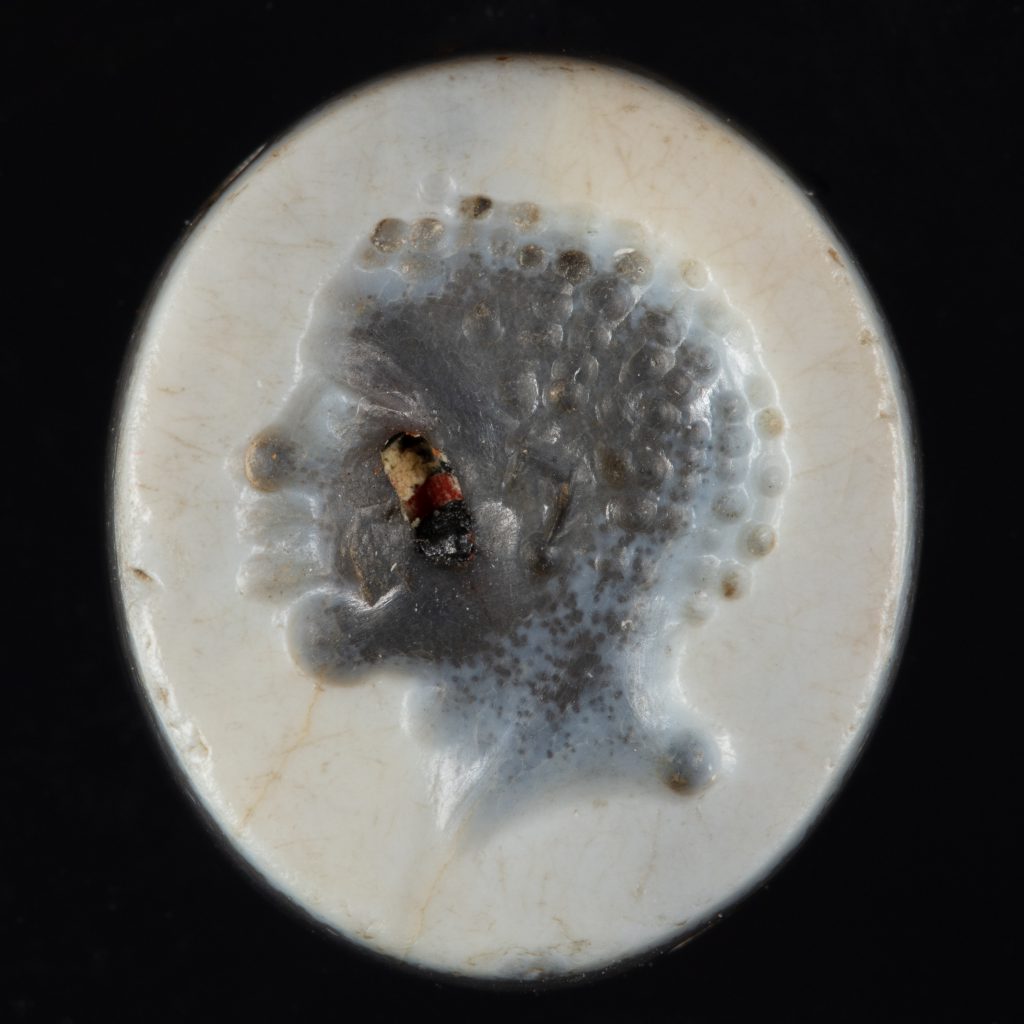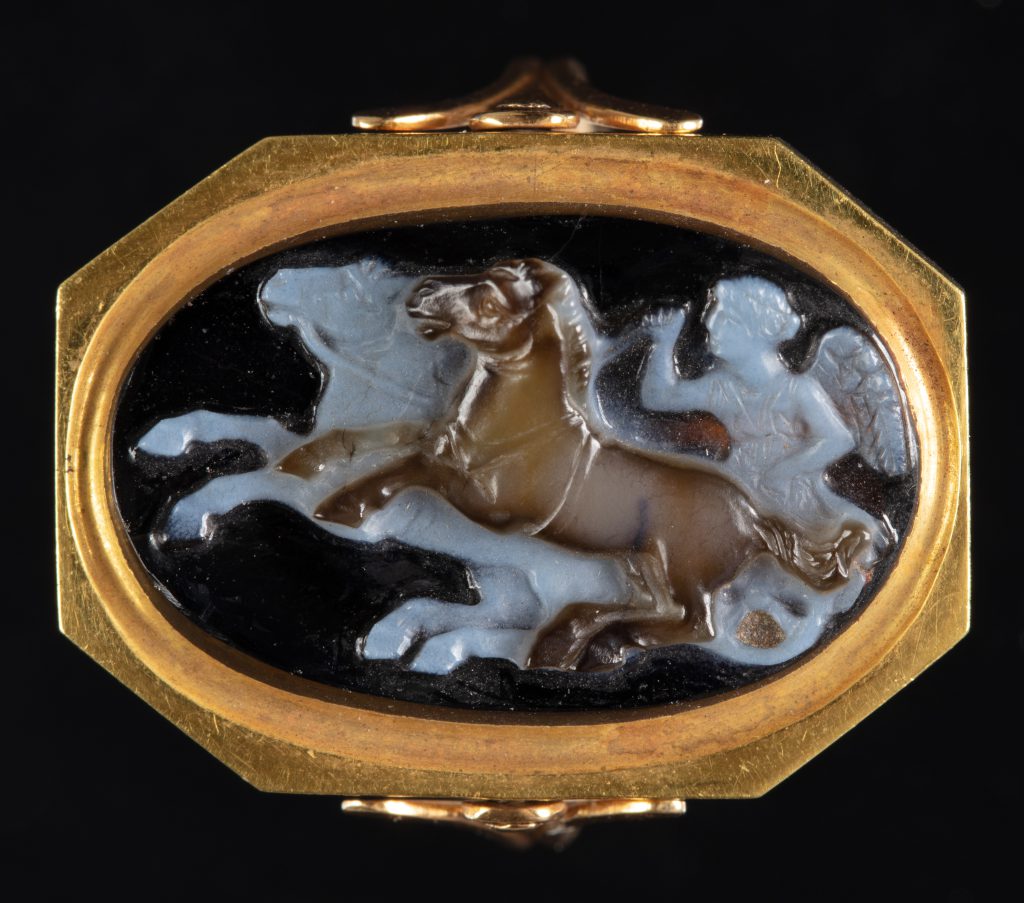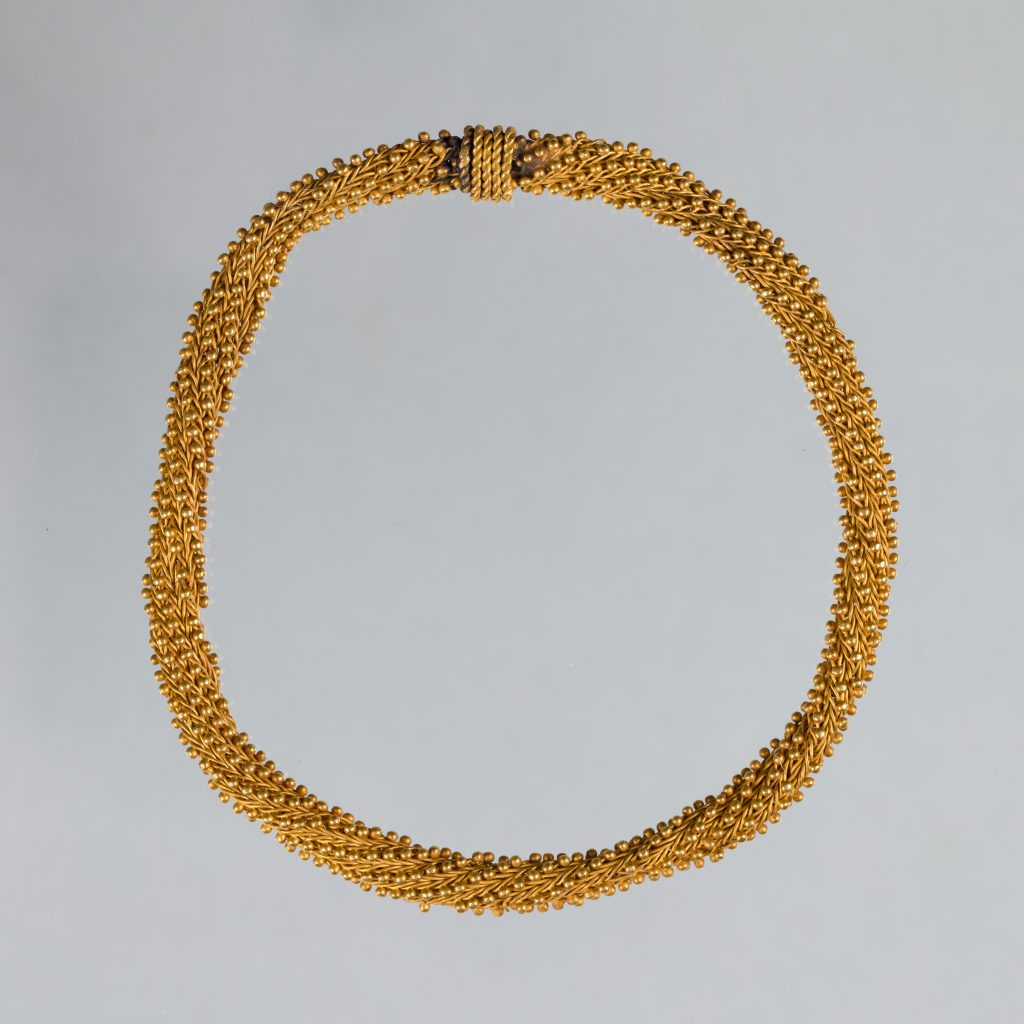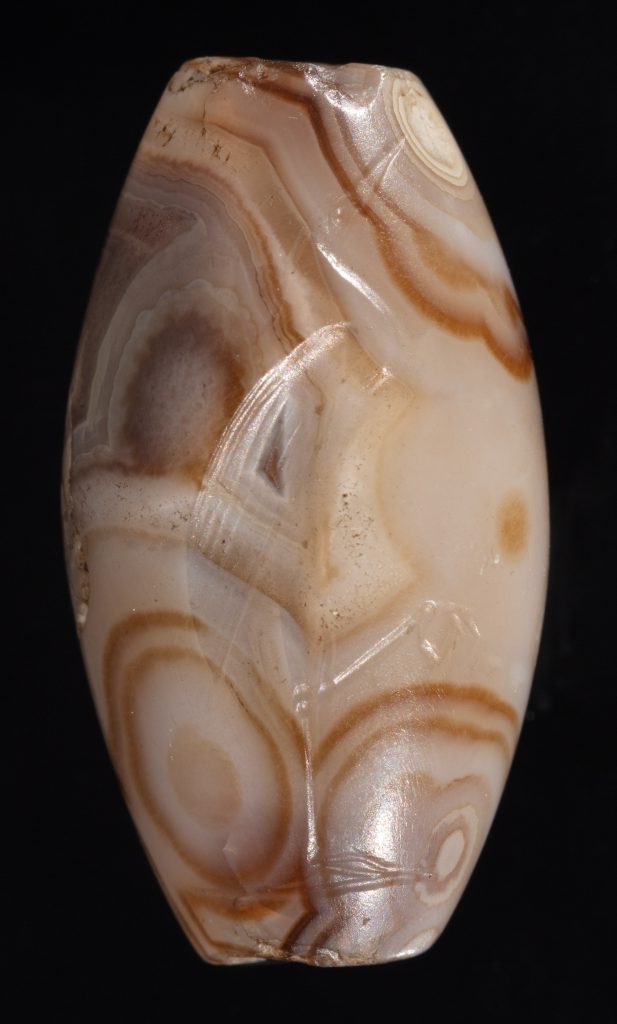
Gift of Edward Perry Warren, Esq., Honorary Degree 1926
1915.14This bead depicts a heron gracefully perched on its right leg, as its left bends with an outstretched talon. The soft curve of the body echoes the natural, circular patterns of the agate, and the bird’s thin neck bends backward to extend its sharp beak upward. The exceptional skill with which the bird was engraved is reflected in the natural striations of agate material. This type of gemstone was treasured in the ancient Mediterranean world to such an extent that the visual effect of swirling or striped multi-colored bands was often artificially replicated.
This delicate portrayal of the heron is related to several other depictions, such as that of a scaraboid gem with heron now at the Museum of Fine Arts (MFA), Boston. The latter gem was purchased by Edward Perry Warren in Athens in 1900, after which he sold it to the MFA. The important similarities between these two works were established by John Beazley in his catalog, The Lewes House Collection of Ancient Gems. He notes that archaeologist Adolf Furtwängler suggested that the MFA scaraboid was most likely carved by Dexamenos, and both Beazley and Stanley Casson have suggested the possibility that this attribution could extend to the bead as well.
Before 1915, collection of Edward Perry Warren; 1915, gifted to the Bowdoin College Museum of Art by Edward Perry Warren.
Collector
A testament to his impact as an influential twentieth-century American antiquities collector, Edward Perry Warren’s (1860–1928, H ’26) name is linked to hundreds of ancient objects housed in institutions across the United States, including more than five hundred works at the Bowdoin College Museum of Art alone.


